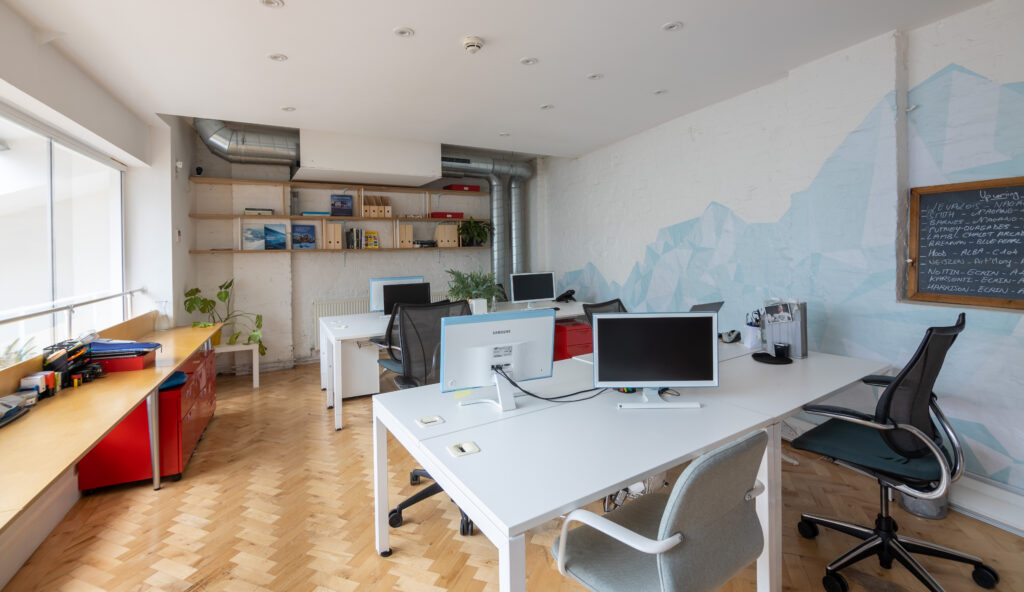Coworking spaces have revolutionised how professionals and entrepreneurs work, offering flexible and collaborative environments catering to various industries and individual needs. However, creating a truly effective coworking space requires a delicate balance of design, functionality, and usability. Coworking spaces that don’t strike this balance are prone to many common design mistakes that render them ineffective. Here are some of the top design mistakes that make coworking spaces impractical.

Overlooking Collaboration Spaces
The sense of community plays a role in office spaces, especially in coworking environments, where diverse industries and skill sets come together under one roof. However, an ineffective interior design can inadvertently diminish the potential for collaboration, hindering one of the essential benefits of coworking spaces.
Overlooking the importance of collaboration spaces can lead to a stifled atmosphere that hampers networking and teamwork opportunities. The lack of suitable areas for group work may lead members to resort to informal gatherings in less suitable spaces, causing distractions for others and potentially creating tension within the coworking community.
These spaces should be easily accessible, visually inviting, and equipped with comfortable seating, writable surfaces, and digital presentation tools. Ideally, collaboration spaces should balance openness and privacy, allowing for lively discussions without disrupting coworkers.
Neglecting Acoustics
Despite their many advantages, coworking spaces can often be plagued by poor acoustics, significantly impacting productivity and overall satisfaction. Neglecting acoustics in coworking spaces can lead to a noisy and distracting work environment, making it difficult for members to focus and achieve their professional goals.
Addressing acoustics during design is crucial for creating a comfortable and efficient coworking space. Incorporating sound-absorbing materials and elements, such as acoustic panels, carpets, and upholstered furniture, can help absorb sound and reduce noise levels. Placing furniture and monitors can also help reduce noise by directing sound away from the most disruptive areas.
Furthermore, strategically dividing the space into separate zones for different work activities, such as quiet areas for focused tasks and dedicated collaboration spaces, can help create a more balanced acoustic environment. By investing in soundproofing solutions and creating well-defined work zones, coworking spaces can cater to various needs and preferences.
Overcrowding Workstations
To maximise available space and accommodate more members, you may be tempted to pack workstations too closely together, resulting in a cramped and uncomfortable setting. It hinders productivity and can lead to dissatisfaction and stress among members, ultimately affecting the coworking space’s success.

To avoid overcrowding workstations, it’s essential to carefully plan the layout and distribution of work areas, considering potential members’ needs and preferences. A well-designed coworking space should provide a variety of workstations, including individual desks, communal tables, and more secluded areas for focused tasks.
By offering a range of options, members can choose the work setting that best suits their requirements and preferences. Additionally, incorporating elements such as plants, screens, or partitions can help create visual separation and privacy between workstations, preventing overcrowding.
Underestimating Storage Solutions
You shouldn’t overlook the importance of adequate storage solutions to create stylish and functional coworking spaces. It can result in an ineffective coworking space that needs more organisation, leading to cluttered workstations and a lack of privacy for members’ belongings. To avoid this common interior design mistake, carefully assess your members’ storage needs and incorporate various solutions. Providing lockers or dedicated storage areas for personal belongings can offer members security and ownership while minimising clutter around their workstations.
Integrating ample storage options, such as shelves, cabinets, and drawers, in communal areas can help maintain a clean and organised environment that fosters productivity. Thoughtful storage solutions contribute to the coworking space’s functionality and enhance its visual appeal by reducing clutter and promoting tidiness.
Disregarding Ergonomics
Ignoring ergonomics in interior design can lead to an ineffective coworking space that may negatively impact its members’ health, comfort, and productivity. With professionals spending long hours at their workstations, providing ergonomically designed furniture and workspaces that promote proper posture, reduce strain, and prevent injury becomes crucial.
A well-designed coworking space should consider ergonomics by having furniture and accessories catering to various body types and work styles. Adjustable chairs with lumbar support, standing desks, and ergonomic keyboard trays are just a few ergonomic elements that can significantly enhance member comfort and productivity. You should also pay attention to the layout of workstations, ensuring that members have sufficient legroom and screen visibility and access to natural light. This focus on ergonomics supports members’ well-being and demonstrates a commitment to fostering a healthy and effective work environment.
Takeaway
A well-designed coworking space demonstrates a commitment to providing a seamless and enjoyable experience for all users, ultimately contributing to the success and growth of the coworking community. By learning from these common pitfalls and implementing thoughtful design strategies, coworking spaces can continue to evolve and thrive as indispensable hubs for innovation and professional development.
Photo credits: Coworking London
